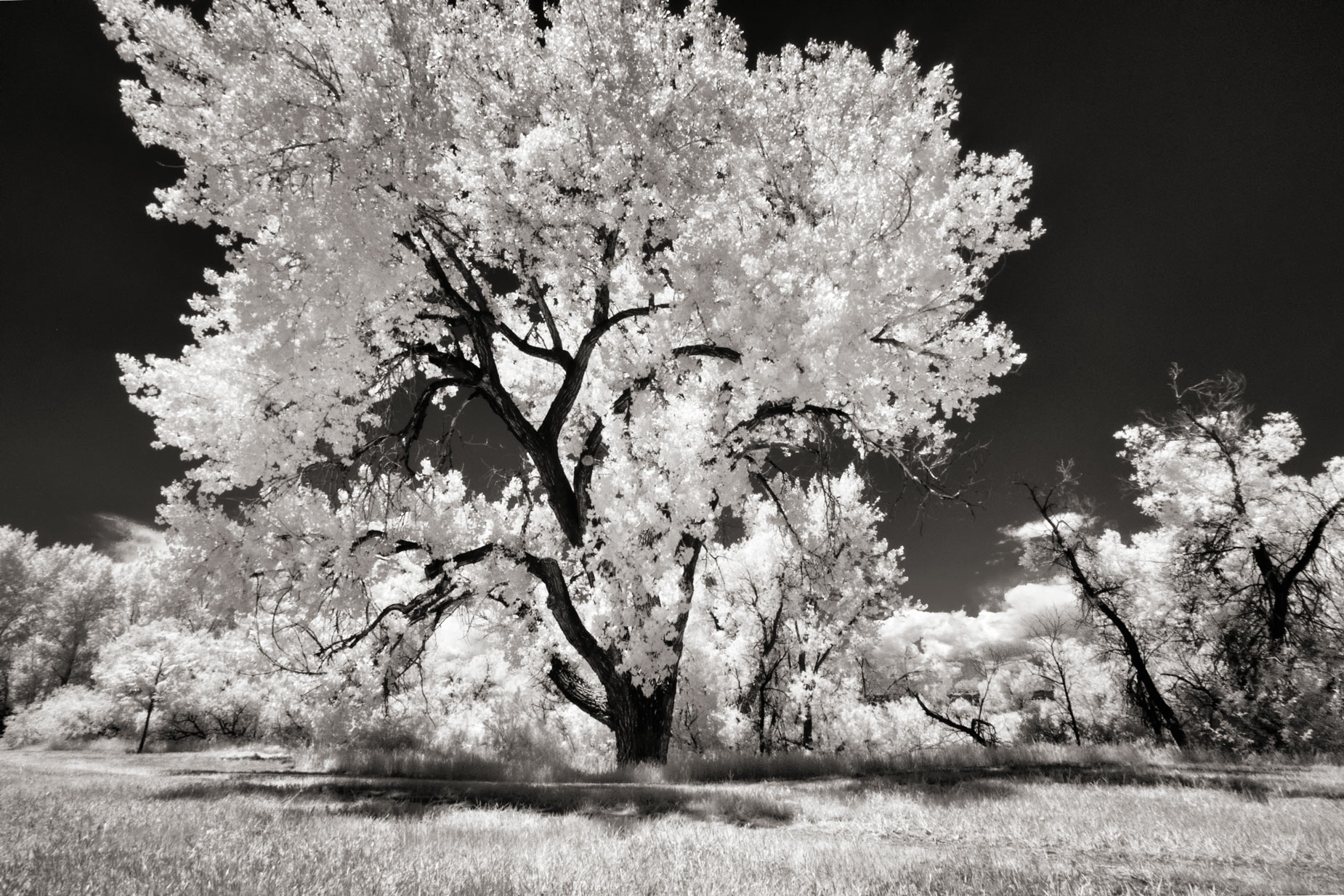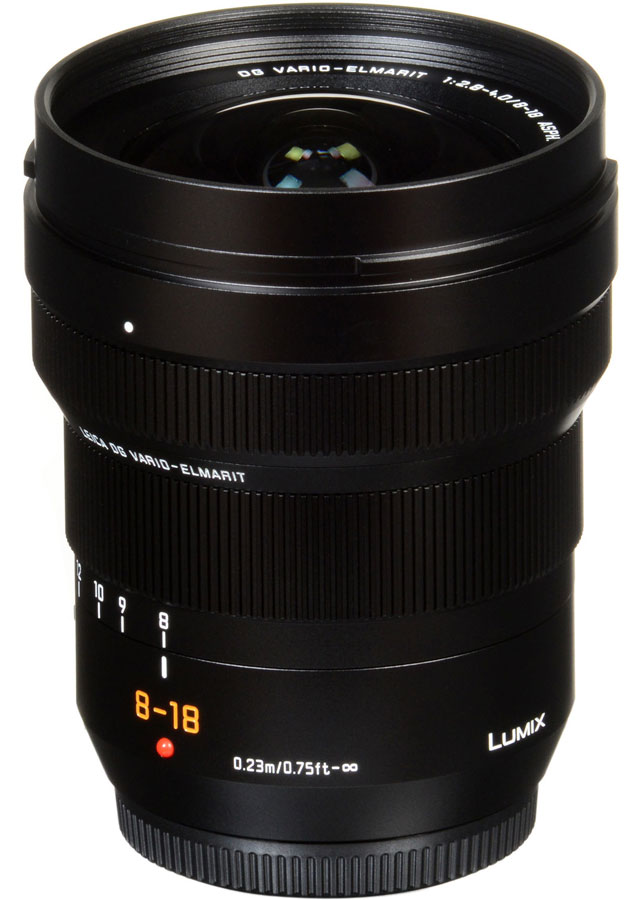This past Saturday, my pal Barry Staver and I were driving home from the Colorado Pen Show—we are both fountain pen enthusiasts—and when driving past McCabe Meadows he asked, “I guess it’s too lake for an Infrared PhotoWalk.” I replied that, “Yes, but even though you can shoot IR year-round, when some leaves are on a tree and they’ve changed colors they will photograph as black.” Today, you’ll see an infrared image of my favorite tree that was shot with one of my bucket list lenses during prime infrared season.
Today’s Post by Joe Farace
The Leica DG Vario-Elmarit 8-18mm f/2.8-4 ASPH lens ($897.99) from Panasonic produces the equivalent of a 16-36mm lens’s field-of-view when used with Micro Four-thirds series cameras from Olympus and Panasonic.
The lens design consists of 15 elements in 10 groups. It uses aspherical Extra-Low Dispersion elements to reduce size and weight—surprisingly the lens weighs only 11.1 oz— to produce high-resolution, high-contrast images. The ED elements are used to correct chromatic aberration with clear color from corner-to-corner. An Ultra-High Refractive Index element improves optical performance, reduces size—the lens is just 3.46 inches long—with uniform image quality from the center to the frame’s edges.

How I made this Shot: I photographed this, yes its my favorite, tree in McCabe Meadows near Parker, Colorado with a Panasonic Lumix G6 that had been converted to infrared by Life Pixel using their Enhanced IR (665nm) filter and the aforementioned Leica DG Vario-Elmarit 8-18mm f/2.8-4 ASPH lens at 16mm (32mm equivalent.) The handheld exposure was 1/200 sec at f/16 and ISO 400. The RAW file was sightly tweaked in Adobe Camera RAW then processed in Silver Efex before applying a Platinum Tone from PhotoKit 2 to warm up the image.
More about the lens
 To control lens flare and ghosting, Nano Surface Coating has been applied to the individual elements for improved contrast and color fidelity when working in strong back lighting. The metal body is splash, dust and freeze proof down to minus 14 degrees F but I never got to test its cold weather performance.
To control lens flare and ghosting, Nano Surface Coating has been applied to the individual elements for improved contrast and color fidelity when working in strong back lighting. The metal body is splash, dust and freeze proof down to minus 14 degrees F but I never got to test its cold weather performance.
The lens has a rounded seven-blade diaphragm for smooth and pleasing bokeh and has a 67mm filter size. Lots of shooters don’t like to put filters on their lenses but a B+W Clear Protection filter in that size costs $78.95, which is less than any repair costs for an almost thousand dollar Leica lens.
One downside may be that there’s no built-in image stabilization but with more and more Lumix cameras —and all Olympus bodies—having IBIS that may not be much of a consideration and it probably keeps the lens smaller and maybe a but less expensive. The Leica is also somewhat larger than Panasonic’s less expensive ($747.99) Lumix G Vario 7-14mm f/4.0 ASPH lens, which has a field-of-view of 114 – 75 degrees compared to the Leica’s 107 – 62 degrees. A lens hood is included with the Leica lens; it’s built into the Lumix lens.
